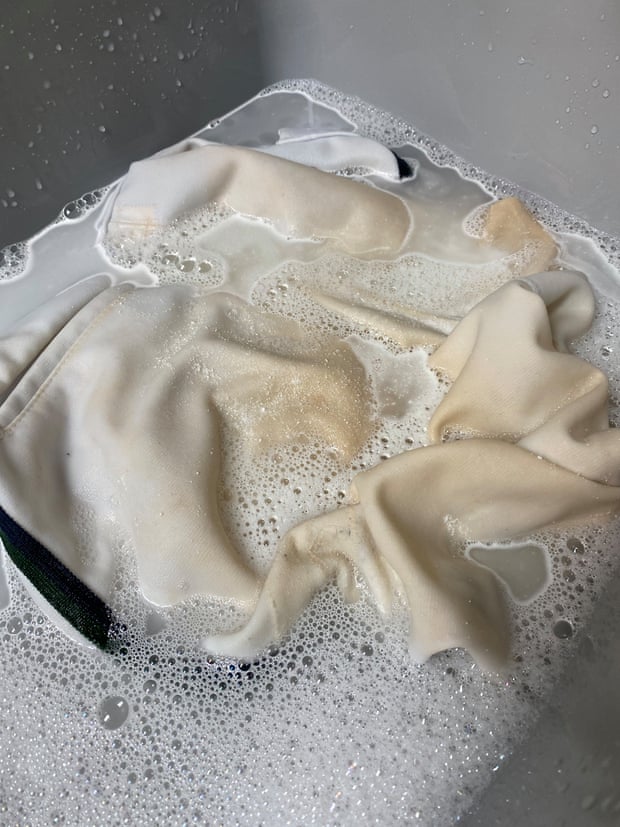
It’s been a while since I stepped off a netball court, but all it takes to remind me of the ankle braces, umpires whistles and someone behind me yelling “here if you need” is the sight of a Lycra dress with built-in bloomers.
In the years I was playing a lot of netball (I was a Goal Attack) my uniform got treated terribly. It would be shoved in my bag with runners and sweaty socks, usually beneath a ball and beside rolls of strapping tape. Often it stayed there until the next week when it would be dragged out and pulled on (ready for another centre pass).
Luckily, performance fabrics are designed to dry quickly and can generally withstand some mistreatment. But my netball uniform would have fared better if I hadn’t been quite so hard on it.
Wash it quickly
Since sweat and dirt can damage the fibres in performance gear, Ryan Tesoriero, co-founder of Valour Sports, says “the ideal procedure in looking after sportswear is to wash it soon after the activity”.
If you have played on a rainy day or taken a tumble, and your uniform is especially dirty, this is even more important. Tesoriero suggests soaking your garments in a bucket of water before putting them in the machine, and spot cleaning any particularly bad stains. Standard stain removers and home remedies such as white vinegar both work for grass stains.
But if you’re training every day, washing right after won’t always be possible. When it isn’t laundry day, Nimble Activewear’s Vera Yan and Katia Santilli suggest airing out your used activewear for a few hours, rather than throwing it straight into the laundry basket.
Use a cool, gentle cycle
Since most sport uniforms are made of synthetic materials, too much heat can erode the fibres. Yan and Santilli recommend “machine washing your activewear in cold water (30 degrees) on a gentle cycle, as hot water and too much agitation can … shorten its lifespan”.
They say it’s best to avoid tumble drying for the same reason, as “the high heat of the dryer can reduce the fabric’s elasticity and moisture-wicking properties”.
Instead, hang your gear on the line to dry. “Place it on a clothesline in the shade to avoid the colours being bleached by the sun,” says Tesoriero.
Turn everything inside out
Since a lot of sports uniforms have abrasive elements such as Velcro or zips, it’s important to take steps to prevent them from catching or snagging in the wash, which can damage your other clothes too. For something like a netball uniform, Tesoriero recommends using a garment bag or “turning the garment inside out to ensure the any heat seals, embroidery or zippers do not rub against other fabrics and cause fabric separation”.
According to Yan and Santilli, washing everything inside out has the added benefit of ensuring the garments are properly cleaned, and come out smelling better. “Bacteria, dead skin cells and sweat rub off on to the inside of your activewear so this is what needs priority in washing.”
Keeping whites white
When washing white garments, such as cricket and tennis uniforms, it’s important they share the machine only with white or light-coloured garments.
If your whites are starting to grey, Tesoriero recommends doing a “laundry strip”, which will deep clean them. Do this “by soaking them in a powerful mix of Borax, washing soda and laundry powder” for several hours, or overnight.
“Once washed, hang out to dry in the sunlight.”
Reducing microfibres
An unfortunate side-effect of performance wear being made from synthetic materials such as Lycra, polyester and nylon is that every time they’re washed, they release plastic microfibres into waterways. To minimise this Tesoriero suggests hand-washing, “as it is less likely to disrupt the fabrics”.
Placing garments inside a Guppyfriend washing bag, which “catches the microfibres throughout the washing process”, is also an effective way to minimise microfibre shedding.
But be mindful of how you dispose of the fibres that it catches. It might be tempting to rinse the bag out under a tap which would, of course, completely defeat the purpose. Instead, put the fibres in the bin, ideally in a sealed container to stop them blowing away.



